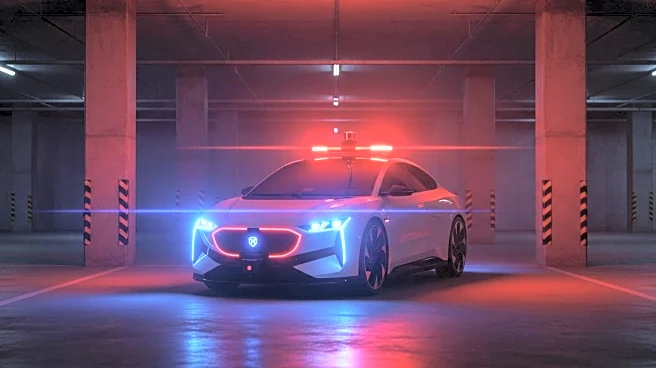What's Happening?
Tesla is under investigation by the National Highway Traffic Safety Administration (NHTSA) due to reports that its Full Self-Driving (FSD) software has violated traffic laws, leading to multiple crashes. The NHTSA has received at least 18 complaints alleging that Tesla vehicles using the FSD feature ran red lights, veered into opposing lanes, and failed to correctly identify traffic signals. The investigation aims to determine whether Tesla provided adequate warnings or opportunities for drivers to intervene before the cars made unexpected maneuvers. The FSD mode is classified as partially autonomous, requiring drivers to remain fully responsible for vehicle operation.
Why It's Important?
The investigation into Tesla's FSD software is significant as it raises concerns about the safety and reliability of autonomous driving technology. The outcome could impact Tesla's operations and influence regulatory standards for self-driving vehicles. If the investigation finds Tesla at fault, it may lead to stricter regulations and oversight of autonomous vehicle technology, affecting the broader industry. The case also highlights the ongoing debate over the balance between innovation and safety in the development of self-driving cars.
What's Next?
The NHTSA will continue its investigation to assess the adequacy of Tesla's warnings and driver intervention opportunities. Depending on the findings, Tesla may face regulatory actions or be required to make changes to its FSD software. The investigation could also prompt other automakers to review their autonomous driving technologies to ensure compliance with safety standards. Stakeholders, including consumers and industry experts, will be closely monitoring the situation for potential implications on the future of self-driving technology.
Beyond the Headlines
The investigation may lead to broader discussions about the ethical and legal responsibilities of automakers in ensuring the safety of autonomous vehicles. It could also influence public perception of self-driving technology, potentially affecting consumer trust and adoption rates. Additionally, the case may spark debates on the role of government regulation in balancing technological advancement with public safety.












